Recent Storm Damage Posts
Common Sources of Water Damage and How to Prevent It | SERVPRO® of San Diego East
2/21/2025 (Permalink)
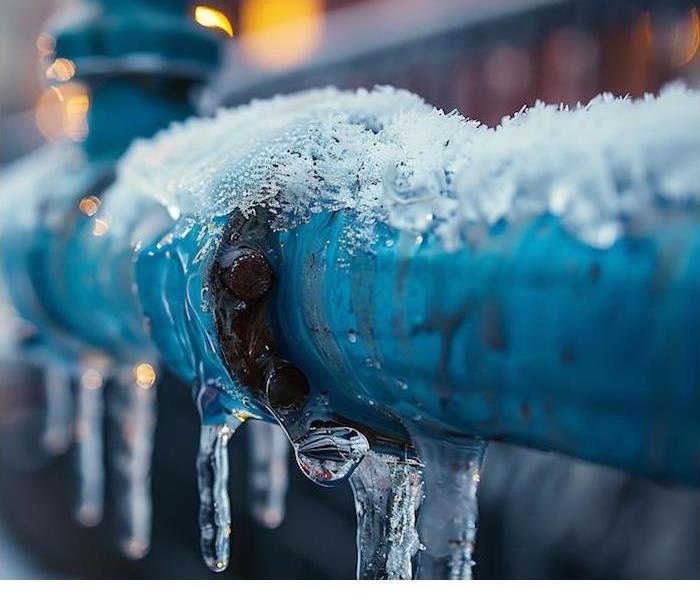 Protect your home this winter.
Protect your home this winter.
Water damage can be a homeowner's worst nightmare, and the winter months bring additional risks. Whether it's due to frozen pipes or heavy rain, it's essential to take proactive steps to prevent leaks and water-related disasters. SERVPRO® of San Diego East is here to help you identify common sources of water damage and share simple prevention tips to protect your home during the chilly season.
1. Frozen Pipes: A Winter Threat You Can't Ignore
During the colder months, frozen pipes become a significant concern for homeowners in San Diego and beyond. While the region doesn't experience extreme winter temperatures, unexpected cold snaps can still cause pipes to freeze, burst, and result in water damage. This issue is most common in uninsulated areas like attics, basements, and garages, where temperatures dip lower.
Prevention Tips for Frozen Pipes:
Insulate exposed pipes: Use foam pipe insulation to protect pipes in colder areas of your home.
Keep the heat on: Even when you're away, make sure the thermostat is set to at least 55°F.
Let faucets drip: Running water is less likely to freeze. Let a faucet drip during especially cold nights.
2. Leaking Appliances: An Ongoing Risk
Appliances such as dishwashers, washing machines, and refrigerators with water lines are common culprits of indoor water damage. Over time, hoses can wear out, or connections can loosen, leading to leaks that may go unnoticed until it's too late.
Prevention Tips for Leaking Appliances:
Inspect hoses regularly: Check for cracks or wear and replace any old or damaged hoses.
Tighten connections: Make sure all connections are secure, and check for leaks frequently.
Use appliance trays: Place trays under appliances to catch small leaks before they turn into major issues.
3. Heavy Rain and Roof Leaks: San Diego's Winter Challenge
Though San Diego's winters aren't known for heavy snowfall, the region can experience intense rainfall during the season. Roof leaks can develop, especially if your roof is older or has existing damage. A roof leak may not be obvious right away, but it can quickly lead to water damage inside your walls or ceilings.
Prevention Tips for Roof Leaks:
Inspect your roof: Look for missing shingles, cracked tiles, or any damage that could allow water to penetrate.
Clean gutters: Clogged gutters can lead to water backup, which increases the risk of roof leaks.
Seal cracks and gaps: Check for gaps around vents, skylights, and chimneys where water could seep in.
SERVPRO® of San Diego East: Your Go-To for Water Damage Prevention and Repair
While taking preventive measures is important, it's also vital to know who to call if a leak or burst pipe causes water damage. SERVPRO® of San Diego East specializes in water damage restoration and can help you get back on track quickly. Whether it's frozen pipes, appliance leaks, or a roof disaster, we've got you covered.
Protect your home this winter. If you're concerned about water damage risks or need help with water damage repair, contact SERVPRO® of San Diego East today. Our team is ready to help you stay safe and dry!
Prevent Plumbing Disasters: Protect Your Business from Water Damage | SERVPRO® of San Diego East
2/21/2025 (Permalink)
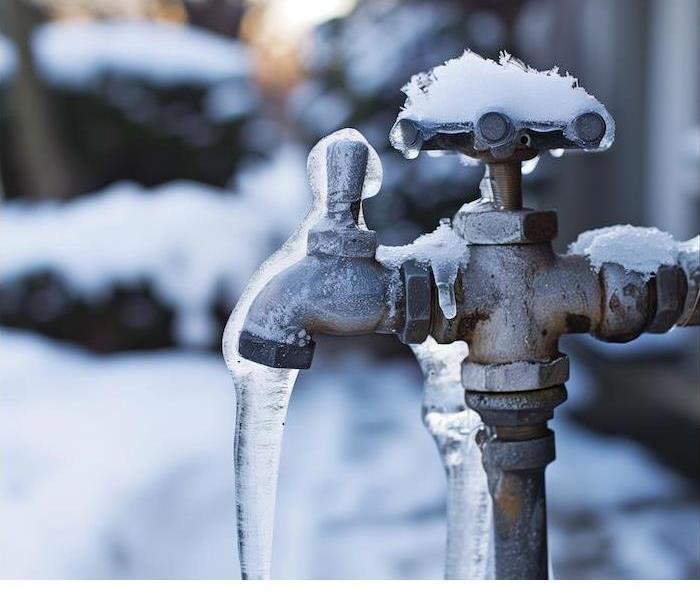 Don’t Wait – Protect Your Business Today!
Don’t Wait – Protect Your Business Today!
The Year-Round Threat of Plumbing Failures
As a business owner in San Diego, you're likely no stranger to the occasional plumbing issue, but water damage can cause more disruption than you'd think. Plumbing failures, whether from frozen pipes in winter or overflowing sinks year-round, can lead to costly repairs and downtime. It's crucial to know how to prevent these issues and how to respond quickly to minimize damage.
At SERVPRO® of San Diego East, we understand that plumbing disasters are often unpredictable. That’s why it's important to stay prepared for potential issues, regardless of the season.
How to Prevent Plumbing Failures at Your Business
Plumbing problems can be avoided with regular maintenance and proactive measures. Here are some tips for keeping your plumbing systems in top shape:
Inspect Your Pipes Regularly: Check for signs of wear and tear, leaks, or clogs in your business’s plumbing system. Scheduling routine inspections can help catch small issues before they turn into major problems.
Install Proper Insulation: While San Diego doesn't experience freezing temperatures as often as other parts of the country, the occasional cold snap can still lead to frozen pipes. Be sure to insulate any exposed pipes, especially those in unheated areas, to prevent them from freezing.
Monitor Water Pressure: High water pressure can cause pipes to rupture. Keep an eye on water pressure and install a pressure regulator if necessary.
Be Mindful of Drains: Prevent clogs by not flushing inappropriate items down the toilet and using drain screens to catch debris in sinks.
By taking these preventive measures, you can avoid most plumbing disasters and ensure your business runs smoothly without interruptions from water damage.
What to Do When Plumbing Failures Occur
Even with the best precautions, plumbing failures can still happen. When they do, you need a professional team to handle the cleanup and restoration. SERVPRO® of San Diego East specializes in water damage restoration and can help you respond quickly to limit the damage. Whether it’s a small leak, an overflowing sink, or a larger plumbing disaster, our team is ready to assist you 24/7.
Act quickly by turning off the water supply, contacting a professional plumber, and calling SERVPRO® of San Diego East for water damage cleanup. The faster you act, the less costly and disruptive the damage will be.
Don’t Wait – Protect Your Business Today!
Preventing plumbing failures and responding to them promptly can save your business from costly water damage. At SERVPRO® of San Diego East, we’re here to help with water damage restoration, no matter the time of year. Ready to take action? Visit SERVPRO® of San Diego East today!
Flooding is Always Possible: How to Stay Prepared | SERVPRO of San Diego East
1/7/2025 (Permalink)
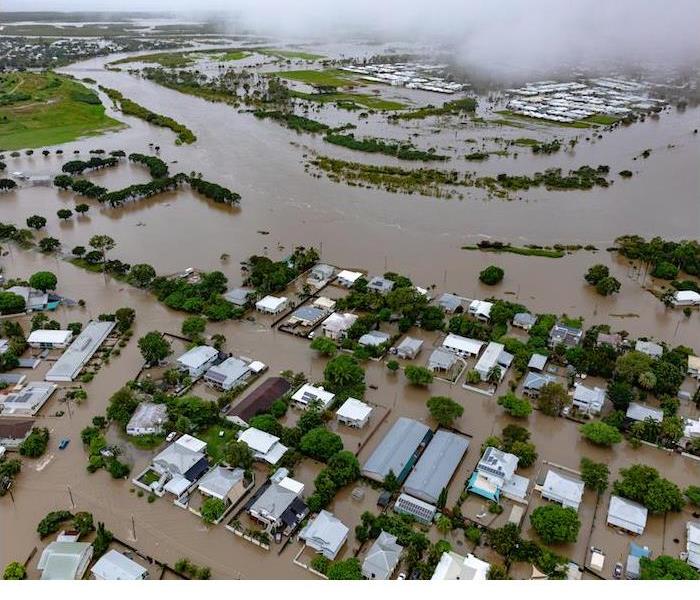 Don't delay! When storm damages affects your property, call SERVPRO of Mid-City San Diego to restore your space.
Don't delay! When storm damages affects your property, call SERVPRO of Mid-City San Diego to restore your space.
San Diego may be known for its sunny weather, but flooding is still a serious concern for homeowners. Even though we typically experience dry spells, the region is not immune to heavy rainfall, flash floods, and water damage. It’s essential to be prepared, so when flooding strikes, you know exactly what to do. At SERVPRO of San Diego East, we’ve seen firsthand how devastating floods can be and are here to offer you the tips and resources needed to protect your home.
Understanding Flood Risks
San Diego’s geography makes it vulnerable to flooding, especially during periods of intense rain and storms. The city’s past shows that when rain hits hard, flash floods can occur, causing streets to overflow and properties to flood. For instance, back in January 2016, a severe storm led to widespread flooding, damaging homes and businesses throughout the area. This wasn’t a one-time event; heavy rainfall during the winter months, particularly when El Niño patterns are present, can result in similar scenarios.
Understanding the risks is half the battle. Knowing that San Diego’s flood risks increase during certain times of the year helps homeowners plan ahead and stay prepared.
1. Create a Flood Emergency Plan
Preparation is key when it comes to protecting your property from flood damage. Start by developing a flood emergency plan for your household. This should include:
- Knowing evacuation routes: Familiarize yourself with safe routes and areas to evacuate if flooding becomes severe.
- Preparing an emergency kit: Stock up on essentials such as bottled water, non-perishable food, flashlights, and first-aid supplies.
- Communicating with family members: Make sure everyone in your household knows the plan and has a way to communicate if you become separated.
2. Safeguard Your Home
You can’t always predict when floods will occur, but you can take steps to minimize the impact. Ensure that your gutters and drains are clear to prevent water from pooling around your property. Consider using sandbags to block potential water entry points during heavy rain. It’s also wise to elevate important utilities like electrical panels and appliances to reduce the risk of water damage.
If flooding does strike, the first step is to ensure your safety. Once the danger has passed, reach out to professionals like SERVPRO of San Diego East to handle the damage safely and efficiently.
Trust SERVPRO of San Diego East for Flood Damage Restoration
Flooding is always a possibility in San Diego, and being prepared is crucial. SERVPRO of San Diego East is here to help® you restore and repair any damage if floods do occur. With our team of experts, you can rest assured that your home will be in capable hands.
Don’t wait until disaster strikes. Contact us today to learn more about how we can assist you with flood preparedness and restoration.
Visit our website for more information.
How to Keep Your Home Damage-Free During Winter | SERVPRO of San Diego East
1/7/2025 (Permalink)
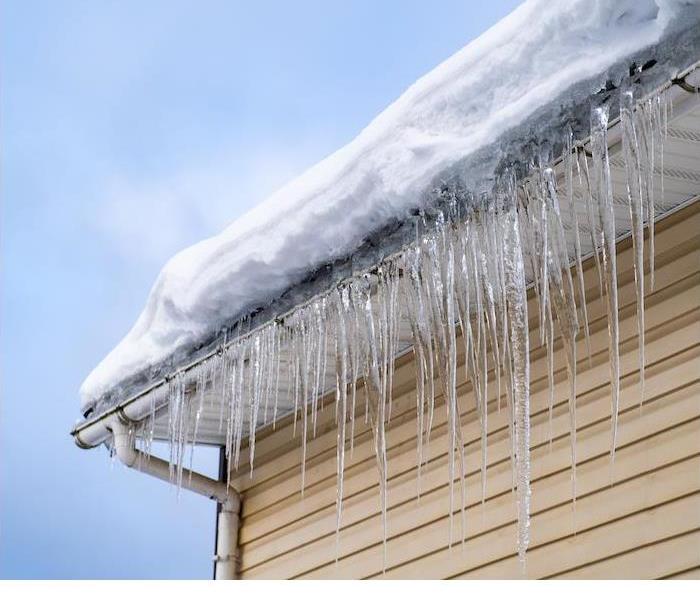 Prepare your San Diego home for winter by securing your roof, gutters, and windows against rain and wind.
Prepare your San Diego home for winter by securing your roof, gutters, and windows against rain and wind.
Winter in San Diego may not bring snowstorms or freezing temperatures, but it has its own set of challenges for homeowners. From heavy rain to unexpected gusty winds, the winter weather can still impact your home if you’re not prepared. Taking proactive steps can help you avoid costly repairs and maintain a safe, comfortable living space throughout the season.
##Protecting Your Home from Rain and Moisture
One of the most common winter weather issues in San Diego is heavy rain, which can lead to water damage if your home isn’t prepared. Begin by inspecting your roof for any loose or missing shingles, as these can allow water to seep through and cause leaks. Clean your gutters to ensure rainwater flows away from your home’s foundation rather than pooling around it.
Windows and doors are another critical area to check. Drafty seals or broken weather stripping can allow water to creep in and lead to mold growth. Properly sealing these openings not only protects against water damage but also improves your home’s energy efficiency, keeping you cozy during those cooler winter nights.
##Safeguard Against High Winds
While San Diego may not experience extreme windstorms, winter gusts can still cause damage. Ensure your trees are trimmed and healthy to avoid falling branches. Check outdoor furniture and décor to ensure they’re secure and won’t become hazardous projectiles during a storm.
If your home has a fence, give it a quick inspection to ensure it’s sturdy. Weak sections can be vulnerable to high winds, potentially causing property damage or safety hazards.
##Keep Your Home Ready for Winter
Even mild San Diego winters require preparation. Take the time to inspect your home now, and you’ll save yourself time, stress, and money down the road. For those moments when the unexpected happens, remember that SERVPRO of San Diego East is here to help®.
Whether it’s water damage from heavy rains or wind damage affecting your property, our expert team is just a call away.
When your home is impacted by winter weather, it’s essential to act quickly to minimize further damage. SERVPRO of San Diego East provides fast, reliable restoration services, giving you peace of mind when you need it most.
Ready to winter-proof your home or need assistance after a storm? Visit SERVPRO of San Diego East to learn more about our services and how we can help protect your home this winter.
Understanding Common Storms and How to Protect Your Home | SERVPRO of San Diego East
9/16/2024 (Permalink)
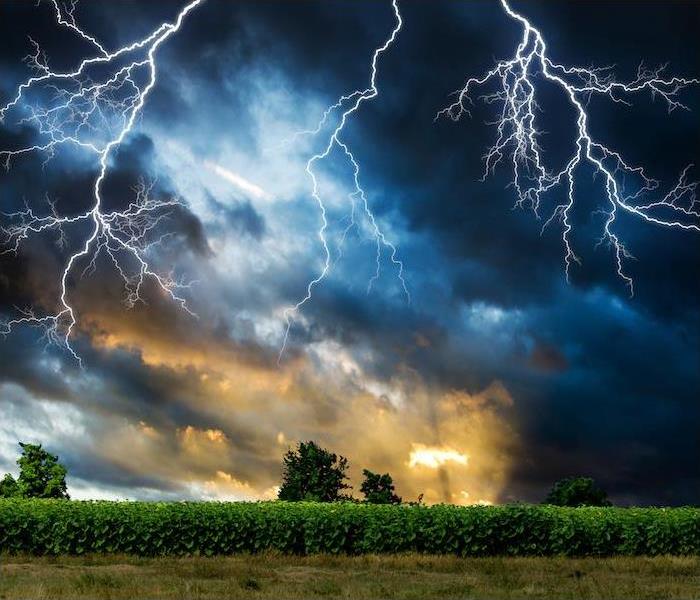 Don't delay! When storm damages affects your property, call SERVPRO of San Diego East to restore your space.
Don't delay! When storm damages affects your property, call SERVPRO of San Diego East to restore your space.
San Diego may be known for its beautiful weather, but that doesn’t mean it’s immune to severe storms. From heavy rain to strong winds, these storms can cause significant damage to your home if you’re not prepared. Understanding the types of weather events that can occur and knowing how to respond can save you a lot of headaches and costly repairs.
Types of Storms in San DiegoSan Diego’s unique coastal and desert climate means that homeowners need to be aware of a few different types of storms that can cause damage. One of the most common is heavy rain during the winter months. While San Diego doesn’t experience heavy rainfall as frequently as other areas, when it does occur, it can lead to flash flooding, especially in low-lying areas or places with poor drainage.
Another weather event that can impact San Diego homes is strong winds. These winds, particularly those from Santa Ana conditions, can knock down trees, damage roofs, and send debris flying, which can shatter windows or damage siding. Although less common, thunderstorms can also occur in San Diego, bringing lightning, hail, and even more intense winds.
How to Respond When Your Home is DamagedIf your home is damaged during one of these storms, it’s important to act quickly to prevent further issues. The first step is to assess the damage safely. Check your home for roof leaks, broken windows, or damaged siding, but be cautious of any potential hazards like downed power lines or flooding.
Once you have a sense of the damage, contact our professional restoration service experts at SERVPRO of San Diego East. Our team of experts can help you secure your home by covering broken windows or tarping over roof damage to prevent water from entering. We can also evaluate the extent of the damage and develop a plan for restoring your home to its pre-storm condition.
Time is critical in storm damage situations, as issues like water intrusion can lead to mold growth within just a few days. SERVPRO of San Diego East is available 24⁄7 to respond quickly and efficiently, minimizing the impact on your home and life.
Protect Your San Diego Home with SERVPRO of San Diego EastDon’t let storm damage catch you off guard. Understanding the risks and having a plan in place can make all the difference. If your home has been impacted by severe weather, trust the professionals at SERVPRO of San Diego East to restore it quickly and effectively.
Visit our website to learn more how we can help you protect your home.
How Gutters and Downspouts Protect Your Home or Business
9/12/2024 (Permalink)
In San Diego, CA, while we enjoy relatively mild weather, storms and heavy rains can still pose significant risks to homes and businesses. Gutters and downspouts play a crucial role in protecting your property from water damage. Here’s why they are essential and how they can help protect your property.
The Role of Gutters and Downspouts
Gutters and downspouts are designed to channel rainwater away from your building's foundation. This system helps prevent water from seeping into the foundation, causing structural damage, and flooding basements or crawl spaces. Properly maintained gutters and downspouts can make a significant difference in protecting your property.
Preventing Foundation Damage
One of the primary reasons gutters and downspouts are crucial is their role in protecting your foundation. When rainwater is not properly directed away from your home, it can pool around the foundation. Over time, this water can seep into the foundation, causing cracks and weakening the structure.
Avoiding Basement Flooding
Basements are particularly vulnerable to water damage if gutters and downspouts are not functioning correctly. Water that pools around the foundation can easily find its way into basements, leading to flooding. This can cause significant damage to personal belongings, HVAC systems, and even create a breeding ground for mold. According to FEMA, even a few inches of water can cause tens of thousands of dollars in damage.
Protecting Landscaping
Properly functioning gutters and downspouts also protect your landscaping. Without them, rainwater can cause soil erosion, wash away plants, and damage flower beds. By directing water away from your property, you can maintain the integrity and beauty of your landscape.
Preventing Mold and Mildew
Mold and mildew thrive in damp environments. Water that leaks into your home due to faulty gutters and downspouts can create ideal conditions for mold growth. Proper drainage helps keep your home dry and reduces the risk of mold-related issues.
Maintenance Tips for Gutters and Downspouts
To ensure your gutters and downspouts are working effectively, regular maintenance is necessary.
Regular Cleaning
Cleaning your gutters at least twice a year is essential to remove leaves, twigs, and other debris that can cause blockages. Clogged gutters can overflow, leading to the very issues they are meant to prevent. During the fall and spring, check your gutters and remove any debris to keep them clear.
Inspect for Damage
Regularly inspect your gutters and downspouts for signs of damage. Look for cracks, rust, or areas where they are pulling away from the house. Addressing these issues promptly can prevent more significant problems down the line.
Ensure Proper Installation
Proper installation is key to the effectiveness of gutters and downspouts. Ensure that they are pitched correctly to allow water to flow toward the downspouts and that the downspouts direct water at least three feet away from the foundation.
Consider Gutter Guards
Gutter guards can be a valuable addition to your gutter system. They help prevent debris from entering the gutters while allowing water to flow through freely. This can reduce the frequency of cleaning and help maintain proper function.
Protect Your Property with Gutter Maintenance
Gutters and downspouts are essential against water damage. Regular maintenance and professional assistance are key to ensuring your gutters and downspouts perform optimally. If your home or business suffers from storm damage, don’t hesitate to contact our SERVPRO of San Diego East team today! We are here to help you keep your property safe and secure from storm damage.
Safeguarding Your Valuables from Storm Damage
5/15/2024 (Permalink)
Storms can wreak havoc on your home, causing significant damage to your property and belongings. While it's essential to prepare your home for storms and take preventive measures, safeguarding your valuables is equally important. In this blog, we'll explore effective ways to protect your valuables from storm damage, ensuring that your most prized possessions remain safe and secure.
Create a Home Inventory
Before a storm strikes, it's crucial to create a detailed home inventory of all your valuables. This inventory should include items such as jewelry, important documents, electronics, artwork, and sentimental items. Documenting your possessions will not only help you assess potential damage post-storm but also assist you in filing insurance claims if needed.
Consider taking photographs or videos of your valuables and storing them in a safe place or digitally in the cloud. Having a comprehensive inventory will enable you to account for all your belongings and streamline the restoration process in case of storm damage.
Invest in Waterproof Containers
Water damage is a common consequence of storms, particularly flooding. To protect your valuables from water damage, invest in waterproof containers or safes. Store important documents, jewelry, and other valuables in these containers to shield them from water infiltration during a storm.
Place the containers in elevated areas of your home to minimize the risk of water exposure. Additionally, consider storing digital copies of important documents on a secure external hard drive or a cloud storage platform for added protection.
Secure Valuables in a Safe
For valuable items such as jewelry, cash, and important documents, consider storing them in a fireproof and waterproof safe. Safes offer an additional layer of protection against storm damage, theft, and fire hazards. Opt for a safe with a high fire and water resistance rating to ensure maximum protection for your valuables.
Place the safe in a secure and easily accessible location within your home, such as a closet or basement. Remember to regularly update the contents of the safe and maintain the safe's security features for enhanced protection.
Utilize Shelving and Storage Solutions
Organizing and storing your valuables on high shelves or elevated platforms can prevent water damage during a storm. Utilize sturdy shelves, cabinets, or storage solutions to keep your valuables off the ground and out of harm's way.
Install shelving units in your home office, garage, or storage areas to store items such as electronics, collectibles, and sentimental objects. By elevating your valuables, you reduce the risk of water exposure and potential damage during a storm.
Consider Off-Site Storage
In preparation for severe storms, consider storing your valuables in an off-site storage facility. Renting a storage unit or utilizing a safe deposit box at a bank can safeguard your valuables from home damage caused by storms.
Transfer items of high value, sentimental significance, or irreplaceable nature to an off-site location for safekeeping. Ensure that the storage facility is secure, climate-controlled, and equipped to protect your belongings from storm damage.
Conclusion
Protecting your valuables from storm damage is essential in safeguarding your most cherished possessions and assets. By creating a home inventory, investing in waterproof containers, securing valuables in a safe, utilizing shelving solutions, and considering off-site storage options, you can mitigate the risk of damage during a storm.
In the unfortunate event of storm damage, contact SERVPRO® for professional storm damage recovery and restoration services. Our experienced team is equipped to handle the restoration of your home and belongings with efficiency and care, ensuring that your property is restored to its pre-storm condition.
Prioritize the protection of your valuables and take proactive measures to safeguard them from storm damage. By implementing these strategies, you can minimize the impact of storms on your most treasured possessions and maintain peace of mind during inclement weather.
Understanding Winter Storms in San Diego
1/14/2024 (Permalink)
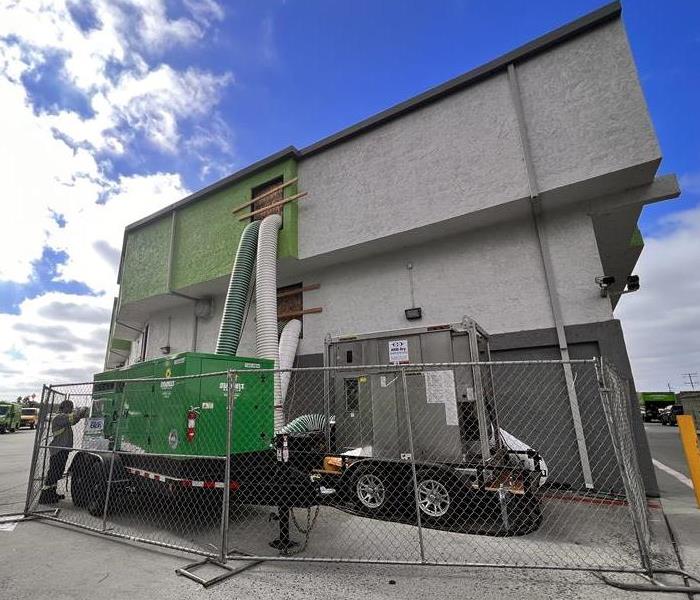 SERVPRO of San Diego East stands ready to assist our fellow San Diego residents in post-storm recovery efforts.
SERVPRO of San Diego East stands ready to assist our fellow San Diego residents in post-storm recovery efforts.
San Diego's reputation for sunny days doesn't shield it from occasional winter storms that can bring unexpected challenges. Understanding these weather phenomena is crucial for preparedness. In this blog, we'll explore the dynamics of winter storms in San Diego and offer insights and tips to navigate these weather events effectively.
Winter Storm Dynamics in San Diego
San Diego experiences distinct characteristics during winter storms, often marked by heavy rainfall. These storms can lead to potential flooding in low-lying areas and increase the risk of flash floods in some neighborhoods due to rapid rainwater accumulation. Strong winds are another hallmark, occasionally causing damage to structures, trees, and power lines. Additionally, hilly or mountainous areas may face a heightened risk of landslides as the soil becomes saturated with rainfall.
Preparation and Safety Measures
Preparing for these winter storms in San Diego requires a proactive approach. Creating an emergency preparedness checklist tailored to the region is essential. This includes securing outdoor items, establishing evacuation plans, reviewing insurance policies, and ensuring readiness with emergency kits. Protecting homes against potential storm damage is critical. Inspecting roofs, clearing gutters, securing windows, and fortifying doors are advisable precautions.
Flood Prevention and Mitigation
Due to the risk of flooding in certain areas, flood prevention measures become crucial. Deploying sandbags, maintaining drainage systems, and securing flood insurance are recommended steps to minimize potential damage. Staying indoors during storms, avoiding floodwaters, staying updated on weather alerts, and having an emergency kit ready are crucial safety practices for residents.
SERVPRO's Role in Post-Storm Recovery
SERVPRO of San Diego East stands ready to assist our fellow San Diego residents in post-storm recovery efforts. With specialized expertise in storm damage restoration, water extraction, mold remediation, and property restoration, our team is equipped to address storm-related challenges promptly and efficiently. We offer local knowledge and a swift response to aid in restoring properties and ensuring a smoother recovery process.
Understanding the dynamics of winter storms in San Diego empowers residents to take proactive measures to protect themselves and their properties. By staying informed, prepared, and vigilant, residents can mitigate risks and ensure safety during inclement weather conditions.
Tips for Homeowners to Prepare for Storms in San Diego
9/17/2023 (Permalink)
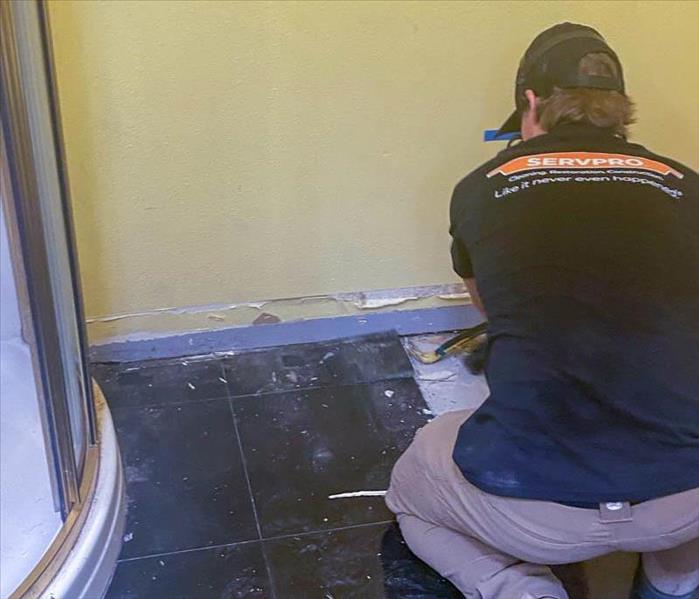 For professional storm damage restoration and cleanup services in San Diego, contact SERVPRO!
For professional storm damage restoration and cleanup services in San Diego, contact SERVPRO!
As storms can be a common occurrence in the San Diego area, it is crucial for homeowners to be prepared. In this blog post, we will share valuable tips and advice on how to effectively prepare for storms and minimize potential damages to your property. By implementing these proactive measures, you can ensure the safety and well-being of your loved ones and safeguard your home.
Understanding Storm Types in San Diego
Before diving into storm preparation, it is essential to understand the common types of storms that can affect San Diego. From rainstorms to windstorms and even the occasional tropical storm, each type can have different impacts on homes and properties. By knowing what to expect, homeowners can tailor their preparations accordingly.
Creating an Emergency Plan
Developing a family emergency plan is crucial to ensure everyone's safety during a storm. This plan should include designated meeting areas, emergency contact information, and a communication strategy. Identifying safe areas within your home, away from windows and exterior walls, is also important to protect against flying debris or structural damage.
Securing Your Property
When a storm is approaching, securing your property is vital to prevent potential damages. Reinforcing doors and windows, clearing gutters and drains, and securing outdoor objects such as patio furniture or garden equipment will help minimize the risk of property damage during high winds or heavy rain.
Protecting Important Documents and Valuables
In the event of a storm, it is crucial to protect essential documents and valuables. Creating digital backups of important files and storing physical documents in a waterproof and fireproof container will help ensure their preservation. Safeguarding valuable items such as jewelry, heirlooms, or sentimental objects is equally important.
Building an Emergency Kit
Every homeowner should have a well-stocked emergency kit that includes essential supplies such as flashlights, batteries, a first aid kit, non-perishable food items, and an ample supply of clean drinking water. Additionally, consider adding extra medications, a battery-powered radio, and personal hygiene items to your kit.
Staying Informed
Utilize local resources and alerts to stay informed about developing weather conditions. Keep track of weather updates, warnings, and evacuation notices through official emergency channels. These sources will provide real-time information and guidance to help you make informed decisions during a storm.
Evacuation Planning
In some cases, evacuation may be necessary for your safety. Therefore, it is crucial to familiarize yourself with the evacuation routes in your area. Plan ahead for any potential evacuation needs, especially if you have pets, by identifying pet-friendly hotels or shelters in advance.
After the Storm: Recovery and Insurance
After the storm passes, it is essential to assess any potential damages to your property and document them thoroughly. Take photographs and make a detailed inventory of all damages for insurance purposes. Contact your insurance provider to initiate the claims process and seek professional assistance, such as SERVPRO of San Diego, for storm damage restoration and cleanup.
By implementing the tips and guidelines provided in this blog post, you can proactively prepare for storms in San Diego and protect your home and family from potential damages. Remember, being prepared not only significantly reduces the impact of storms but also brings peace of mind during challenging times. Stay safe, stay prepared!
For professional storm damage restoration and cleanup services in San Diego, contact SERVPRO of San Diego East. Our dedicated team is here to help you recover and restore your property after storm-related disasters.
How to Protect Your Building from Storm Damage
6/19/2023 (Permalink)
Storms can wreak havoc on buildings, causing significant damage and disrupting daily operations. Protecting your building from storm damage is essential to ensure the safety of occupants and preserve the integrity of the structure. In this blog post, we will discuss effective strategies and practical tips to help you fortify your building against storm damage, empowering you to weather the storm with resilience.
Conduct a Thorough Building Inspection
Start by conducting a comprehensive inspection of your building to identify areas vulnerable to storm damage. Look for signs of wear and tear, such as loose roof shingles, damaged siding, or weakened windows. Address any existing maintenance issues promptly to reinforce the building's resilience against storms.
Reinforce Doors and Windows
Strengthening doors and windows is crucial in protecting your building from storm-related impacts. Install impact-resistant glass or storm shutters to safeguard windows. Reinforce doors with heavy-duty locks, hinges, and sturdy materials. Consider installing bracing systems to reinforce garage doors and prevent them from collapsing under high winds.
Maintain Gutters and Downspouts
Keep gutters and downspouts clear of debris to ensure proper water drainage during storms. Regularly clean and inspect them, removing leaves, twigs, and other obstructions that could cause blockages. Ensure downspouts direct water away from the building's foundation to prevent water infiltration.
Secure Outdoor Equipment and Furniture
Secure outdoor equipment, furniture, and other loose items to prevent them from becoming projectiles during storms. Anchor or store items such as patio furniture, grills, and trash cans in a secure location. Trim tree branches near the building that could potentially break and cause damage.
Reinforce Roofing and Siding
Inspect the roof and siding for any signs of weakness or damage. Repair or replace loose or missing shingles, tiles, or panels. Reinforce roof edges and vulnerable areas with sealants or weather-resistant materials. Ensure the siding is properly installed and sealed to withstand strong winds and heavy rainfall.
Enhance Drainage Systems
Evaluate the building's drainage systems to effectively manage water flow during storms. Ensure proper grading around the foundation to direct water away from the building. Install or maintain French drains, swales, or other drainage solutions to prevent water pooling near the structure.
Backup Power and Emergency Systems
Consider installing backup power systems, such as generators, to maintain essential functions during power outages caused by storms. Have a designated emergency power plan in place to ensure critical systems like alarms, emergency lighting, and communication devices remain operational.
Develop an Emergency Response Plan
Create an emergency response plan tailored to storm-related scenarios. This plan should include evacuation procedures, designated assembly areas, communication protocols, and responsibilities for building occupants. Regularly train and educate staff on the emergency plan to ensure a swift and coordinated response during storm events.
Review Insurance Coverage
Review your insurance coverage to ensure it adequately protects your building against storm damage. Understand the policy terms, deductibles, and coverage limits. Consider additional coverage options if necessary, such as flood insurance or business interruption insurance, to address specific risks associated with storms.
Protecting your building from storm damage requires proactive measures and careful planning. By conducting thorough inspections, reinforcing doors and windows, maintaining gutters and downspouts, securing outdoor equipment, reinforcing roofing and siding, enhancing drainage systems, installing backup power, developing an emergency response plan, and reviewing insurance coverage, you can significantly reduce the potential impact of storms on your building. Remember, regular maintenance and preparedness are key to ensuring the safety and resilience of your building in the face of severe weather conditions.
When To Repair a Roof With Storm Damage
7/27/2022 (Permalink)
When Should a Storm-Damaged Roof Be Repaired?
"As soon as possible" is the short answer when it comes to roof repair. If a number of residences have sustained storm damage or prolonged inclement weather is expected in Del Cerro, CA, mitigation measures such as tarping over damage can help to protect your roof from further hail or wind damage and keep out moisture that might otherwise end up causing damage inside the structure.
After Documenting Damage
If the roof of your home is well-maintained, it may be possible to make a homeowners insurance claim to cover roof damage. If you plan to do so, you should take measures to document damage:
- Get an expert opinion
- Take photographs
- Record video footage
Once you have captured evidence of storm or wind damage, you should immediately arrange for mitigation or repairs. Mitigation measures can limit damage until repairs take place.
After Mitigation Measures
A damage restoration or roofing company may offer damage mitigation services to prevent further damage prior to roof repair. The most common measure involves tarping over a roof:
• Acquire a tarp large enough to cover damage and extend three feet over the ridge
• Wrap the tarp around plywood and secure with deck screws or nails
• Use strapping to tie down the tarp
A tarp can protect a roof surface and the interior of a home from further damage. Insurers seek proof that homeowners have taken every measure they can to limit the damage. Mitigation is helpful for making an insurance claim and reducing the cost of restoring primary and secondary damage.
A homeowner should try to schedule roof repair immediately after damage occurs, ideally within hours or days. Fixing any roof damage can be costly, but expenses will escalate as the damage becomes worse and potentially affects the interior of a residence in Del Cerro, CA. If this occurs, homeowners should contact a roofer and a storm damage restoration service.
What Is Secondary Flood Damage?
6/19/2022 (Permalink)
Heavy rains and flash flooding create the potential for your San Diego, CA, home to be inundated with excessive water. After the storm dies down, it is essential to complete an assessment and contact your flood insurance provider as quickly as possible. While you wait for the adjuster, it’s just as imperative to take measures to minimize the chances of additional issues forming. If that happens, there is good chance insurance won’t cover the repair costs.
Types of Secondary Flood Damage
While there are many visible signs of trouble due to the storm, there are potential issues that need to be addressed before they arise. Common secondary issues include:
Mold Damage: Since mold spores have the ability to form mold within 24 hours, it is vital that the affected areas are dried as soon as possible.
Electrical Issues: Depending on the level of the standing water, the electrical sockets may be affected. While there may not be immediate signs of trouble, it may lead to an electrical fire down the road
Corrosion: Pipes, studs and other metal materials will begin to form rust and corrode if left sitting in water. This may mean the slow deterioration of structural components.
Wood Rot: Wood absorbs water, which may lead to warping, buckling and eventually rotting. Again, this creates the possibility of structural issues down the road.
Consult a Restoration Specialist
If any of the above happens, it’s likely you won’t be able to count on flood insurance. To avoid those secondary issues from arising, it’s recommended to contact a mold and water damage cleanup and restoration company. Along with 24/7 availability to take your call, most certified companies are able to have someone on the scene to conduct a thorough inspection and provide a detailed remediation plan. While waiting for the go-ahead on repairs, they will be able to start the process of removing water-logged materials, water extraction and drying out process.
After the storm, flood insurance offers peace of mind. If action isn't taken to prevent secondary damage, you may be left with additional costly repairs without assistance.
3 Differences Between Flood Damage and Other Water Damage
4/8/2022 (Permalink)
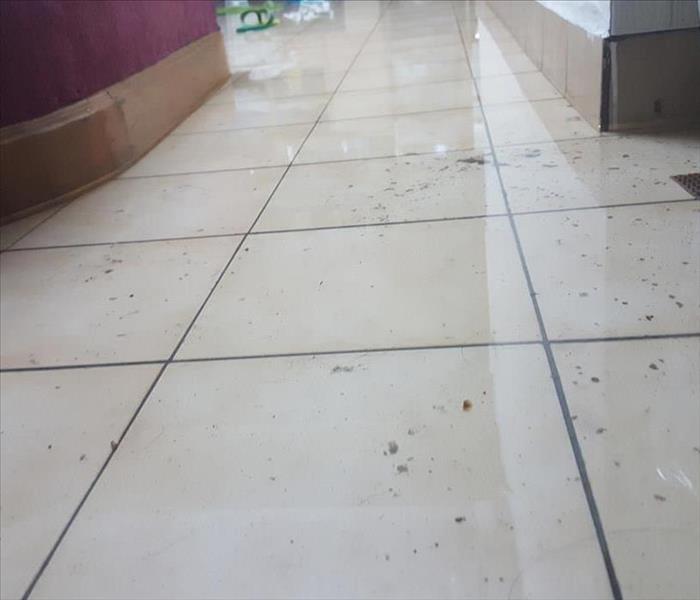 Sewage water fall under the third category.
Sewage water fall under the third category.
3 Key Distinctions Between Flood and Other Water Damage
If there is a serious storm in San Carlos, CA, then you can expect that your commercial building will be affected on some level. Water can come from a variety of sources, and not all of these will cause the same level of trouble. Damage from a flood, for example, differs in the following ways.
1. Contamination Levels
There are three categories of water that you could find yourself dealing with when water damage occurs. Each of these has a different level of contamination. Category 1 is clean; category 2, or gray water, is moderately contaminated; and category 3, or black water, is highly contaminated. Because it picks up debris, sewage and other contaminants from the ground, flood water falls under the third category.
2. Cleanup and Repairs
Because of the high level of contamination, it contains, category 3 water needs to be treated differently than the rest. Blackwater should be removed by a professional restoration service that has the necessary equipment and training to handle this type of emergency. Everything that has been affected will need to be thoroughly cleaned and sanitized. Absorbent materials that cannot be cleaned should be replaced.
3. Insurance Coverage
Another important difference between this and other kinds of water damage is insurance coverage. In many cases, your basic insurance does not cover floods. You will need to purchase an additional policy to ensure your business is prepared for this particular situation. If you are in an area where disasters of this nature occur often, you may be required to have additional coverage.
Although it is important to have any kind of water damage addressed as quickly as possible, there are some additional difficulties that can come with a storm. If your business is located in an area where this is likely, you should take precautions to ensure you are prepared for damage involving category 3 water. To keep your building safe, always have restoration of this kind done by a professional.
3 Ways To Prevent Burst Pipes on a Commercial Property
3/31/2022 (Permalink)
Three Ways to Avoid Commercial Property Pipe Bursts
Burst pipes can be devastating for property owners in Santee, CA. Causes for bursting pipes range and can include:
- Increased water pressure
- Loose pipes
- Winter Storms
You can prevent your property's pipes from bursting by taking preventative measures before a winter storm and repairing damages to plumbing systems as soon as they become noticeable. Here are 3 ways to prevent burst pipes on a commercial property.
1. Insulate Your Property's Pipes
Insulation prevents the water inside of pipes from freezing. When water freezes inside a building's plumbing system, the water pressure increases causing pipes to burst under the added stress. To prevent this, contact a plumber to properly insulate the pipes. You can also take action when a storm is approaching by letting your water run at a drip and opening cabinet doors to allow warmer air around pipes. Storm damage is a common cause of leaks and pipe bursts but can be prevented with preparation.
2. Replace Old Plumbing Systems
Outdated plumbing systems do not have rust-resistant materials and are prone to tears. The materials used to make older plumbing systems include cast iron pipes, which become eroded with frequent water use and changing weather conditions. When a winter storm hits, these plumbing materials become more vulnerable to bursts. Update your plumbing system to ensure its best functionality.
3. Inspect Your Plumbing System Regularly
Be diligent with your plumbing system catching tears, worn joints and leaks before they surprise you. Keeping your system up to date will prevent leaks from worn pipes and protect your building from pipe bursts during inclement weather. Leaks and burst pipes are preventable with proper maintenance and insulation.
If you have experienced a pipe break due to a winter storm, contact a local water damage restoration service to help clean your property. A professional service will also help to dehumidify your property and restore it back to normal.
3 Things To Avoid After a Flood
1/23/2022 (Permalink)
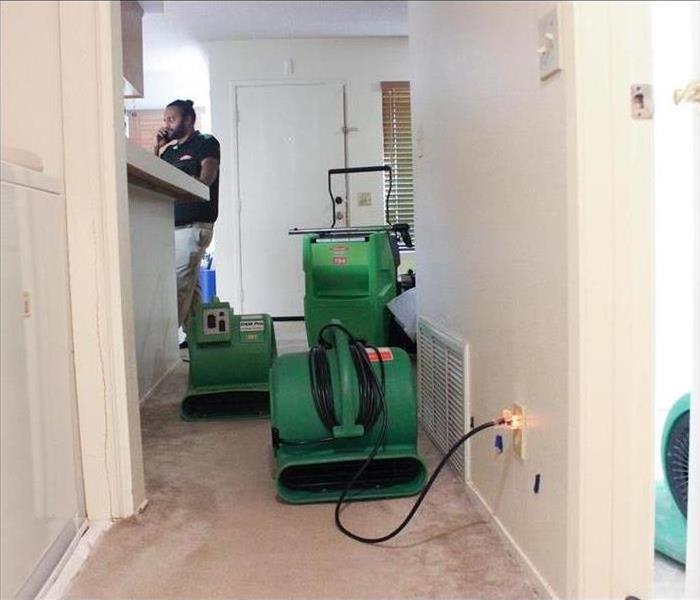 Storm remediation in Lake Murray, CA.
Storm remediation in Lake Murray, CA.
How To Handle Flood Damage
When storms send flood water into your Lake Murray, CA, home, you don't always know what to do. When is it safe to return to your house? Can you start the cleanup on your own? How you handle a flood will depend on the severity of the damage. It can be helpful to call about storm damage services right after the storm has left your area. You should also try to avoid doing the following:
1. Walking Into Standing Water
Did you know that 6 inches of moving water can cause you to lose your footing? Because even shallow waters can be dangerous, you should avoid walking into any standing water. Your flooded home may be full of stagnant water, but you should still avoid going into it. If the electricity is on, the water could be charged. Storm water could contain dangerous contaminants, too.
2. Waiting To Schedule a Cleanup
Do you want to try to tackle the water damage on your own? Unless you know how to effectively remove flooding and humidity from your house, you should turn to a professional. The sooner you can schedule your cleanup, the better it will be for your home. If you wait too long, you may have increased mold growth in your space.
3. Returning to Your Home Too Soon
While you want your life to return to normal, you need to make sure the flood water is completely gone before you return. Going home too soon can make it harder for the cleanup crew to properly remove excess humidity. The cleanup may require building materials to be replaced, which can leave your home dusty. If you wait until the entire process is finished, you can return to a more normal life right when you move back in.
Storm flood water may cause you to leave your home until the damage can be fixed. Taking the wrong steps after this type of flood can make the restoration process harder than it has to be, so remember what not to do.






 24/7 Emergency Service
24/7 Emergency Service







